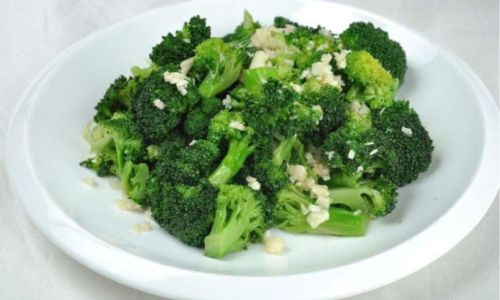Stir-fried broccoli is a dish that bridges simplicity and sophistication, offering a burst of flavor, texture, and nutrition in every bite. Often overlooked in favor of more elaborate recipes, this humble vegetable can transform into a star ingredient when cooked with precision and care. Whether you’re a seasoned home cook or a novice in the kitchen, mastering the technique of stir-frying broccoli will equip you with a versatile skill that elevates meals, impresses guests, and nourishes your body. This article delves into the history, science, and step-by-step methodology behind creating the perfect stir-fried broccoli, ensuring your dish is vibrant, crisp, and utterly delicious.

The Humble Beginnings of Stir-Frying
Stir-frying, a cooking technique synonymous with Chinese cuisine, dates back over 1,500 years. Originally developed as a practical way to cook small portions of food quickly over high heat, it has since become a global culinary staple. The method involves tossing ingredients in a wok or skillet with minimal oil, preserving their natural flavors, colors, and nutrients. Broccoli, a member of the Brassica oleracea family, pairs exceptionally well with this technique due to its sturdy texture and ability to absorb flavors without becoming mushy.
Why Broccoli?
Broccoli is a nutritional powerhouse, packed with vitamins C and K, fiber, folate, and antioxidants like sulforaphane. Its robust structure allows it to withstand high-heat cooking methods like stir-frying, making it an ideal candidate for quick, healthy meals. When cooked properly, broccoli retains its bright green hue and a satisfying crunch, avoiding the dreaded sogginess that plagues overcooked vegetables.
Ingredients: Simplicity Meets Flexibility
The beauty of stir-fried broccoli lies in its adaptability. While the core ingredients remain consistent, you can tailor the dish to suit your taste preferences, dietary needs, or pantry availability.
Essential Ingredients:
- Broccoli (1 medium head): Choose fresh, firm florets with tightly closed buds. Avoid yellowing or wilting stems.
- Oil (2–3 tbsp): Use a neutral oil with a high smoke point, such as vegetable, canola, or peanut oil. For added flavor, consider sesame oil (use sparingly, as it has a strong taste).
- Garlic (3–4 cloves, minced): Aromatic and pungent, garlic forms the flavor backbone of most stir-fries.
- Ginger (1 tsp, grated): Optional but highly recommended for a zesty kick.
- Soy sauce (1–2 tbsp): Opt for low-sodium soy sauce if watching salt intake. Tamari or coconut aminos serve as gluten-free alternatives.
- Oyster sauce (1 tbsp): Adds umami depth; substitute with hoisin sauce or mushroom-based stir-fry sauce for vegetarian/vegan options.
- Water or stock (2–3 tbsp): Helps steam the broccoli slightly during cooking.
- Cornstarch (1 tsp): Mixed with water to create a slurry for thickening the sauce (optional).
Optional Additions:
- Protein: Tofu, tempeh, chicken, shrimp, or beef.
- Vegetables: Bell peppers, carrots, mushrooms, or snap peas.
- Aromatics: Scallions, chili flakes, or cilantro.
- Nuts/Seeds: Toasted sesame seeds, cashews, or peanuts for crunch.
Preparation: The Foundation of Flavor
-
Cleaning and Cutting Broccoli:
- Rinse the broccoli head under cold water, gently scrubbing the florets to remove dirt. Pat dry thoroughly to prevent splattering during cooking.
- Trim the tough end of the stem, then slice the broccoli into bite-sized florets. For larger stems, peel the outer layer with a vegetable peeler and slice them into thin coins or matchsticks. Uniformity in size ensures even cooking.
-
Blanching (Optional but Recommended):

Blanching broccoli before stir-frying helps retain its vibrant color and jump-starts the cooking process. Bring a pot of salted water to a boil, add the broccoli, and cook for 1–2 minutes. Immediately transfer to an ice bath to halt cooking. Drain and pat dry.
-
Mise en Place:
- Prepare all ingredients before heating the wok. Stir-frying moves quickly, and having everything prepped prevents overcooking.
The Stir-Frying Process: Step-by-Step
-
Heat the Wok:
- Place a wok or large skillet over high heat. Allow it to become scorching hot—this is crucial for achieving the signature wok hei (breath of the wok) flavor.
-
Add Oil:
Swirl the oil around the wok to coat the surface evenly. Neutral oils are best for high-heat cooking, as they don’t impart strong flavors.
-
Aromatics First:
Toss in the minced garlic and ginger. Stir-fry for 10–15 seconds until fragrant but not browned. Burnt garlic will impart a bitter taste, so act swiftly.

-
Broccoli:
Add the broccoli to the wok, tossing gently to coat it in oil and aromatics. Spread the florets in a single layer to ensure even searing.
-
Sauté and Steam:
Stir-fry the broccoli for 2–3 minutes until it begins to char slightly. Pour in the water or stock, cover the wok, and let it steam for 1–2 minutes. This dual method of sautéing and steaming yields tender-crisp results.
-
Sauce:
Uncover the wok and add the soy sauce, oyster sauce, and any additional seasonings. Toss to combine. For a thicker sauce, stir the cornstarch into a tablespoon of water and pour it into the wok, stirring until the sauce clings to the broccoli.
-
Finish:

Remove from heat and garnish with sesame seeds, chili flakes, or a drizzle of sesame oil. Serve immediately.
Common Mistakes and How to Avoid Them
-
Overcrowding the Wok:
Cooking too much broccoli at once lowers the wok’s temperature, leading to steaming instead of searing. Work in batches if necessary.
-
Undercooked or Overcooked Florets:
Test doneness by piercing a floret with a knife—it should meet slight resistance. Overcooked broccoli turns dull green and mushy.
-
Skipping Blanching:
While optional, blanching ensures even cooking and preserves color, especially for thicker stems.

-
Using Low-Quality Oil:
Avoid olive oil, which has a low smoke point and can burn at high temperatures.
Variations and Customizations
- Spicy Stir-Fry: Add fresh chili peppers or a splash of sriracha during the cooking process.
- Lemon-Garlic Broccoli: Squeeze fresh lemon juice and zest over the finished dish for a citrusy twist.
- Cheesy Broccoli: Toss with grated Parmesan or nutritional yeast for a dairy-free option.
- Meat Lovers: Stir-fry sliced chicken or beef with the broccoli, ensuring the protein is cooked through before adding the vegetables.
Health Benefits of Stir-Fried Broccoli
- Nutrient Retention: Stir-frying preserves more vitamins and minerals compared to boiling or steaming.
- Fiber-Rich: Aids digestion and promotes satiety.
- Low-Calorie: A single serving contains fewer than 50 calories, making it ideal for weight management.
Pairing Suggestions
- Rice: Jasmine, basmati, or brown rice.
- Noodles: Lo mein, chow mein, or zucchini noodles for a low-carb alternative.
- Proteins: Grilled salmon, fried eggs, or crispy tofu.
- Soups: Add to miso soup or egg drop soup for texture.
The Science Behind Stir-Frying
Stir-frying relies on the Maillard reaction—a chemical process where amino acids and reducing sugars react under high heat, creating complex flavors and aromas. The rapid cooking also preserves the broccoli’s chlorophyll, maintaining its vivid green color. Additionally, the brief cooking time minimizes nutrient loss, ensuring the dish is as wholesome as it is tasty.
Cultural Significance
In Chinese cuisine, stir-fried broccoli often symbolizes prosperity and good fortune, making it a staple during festivals and celebrations. The dish’s simplicity reflects the philosophy of hao chi bu dan (good food need not be complicated), emphasizing quality ingredients and precise technique over elaborate preparation.
Troubleshooting Guide
- Soggy Broccoli: Reduce steaming time or increase heat during sautéing.
- Bland Flavor: Amplify seasonings or add a pinch of salt during cooking.
- Burnt Garlic: Lower the heat or add garlic later in the process.
- Uneven Cooking: Cut broccoli into uniform pieces and avoid overcrowding the wok.
Conclusion
Stir-fried broccoli is more than a side dish—it’s a testament to the harmony of texture, flavor, and nutrition. By mastering the art of high-heat cooking, blanching, and seasoning, you can transform this unassuming vegetable into a culinary masterpiece. Whether you adhere strictly to tradition or experiment with bold variations, the key lies in balance: respect the integrity of the ingredient, embrace the alchemy of the wok, and savor each crisp, vibrant bite. So next time you’re in the kitchen, let the sizzle of the wok and the aroma of garlic guide you—your journey to broccoli perfection awaits.






0 comments